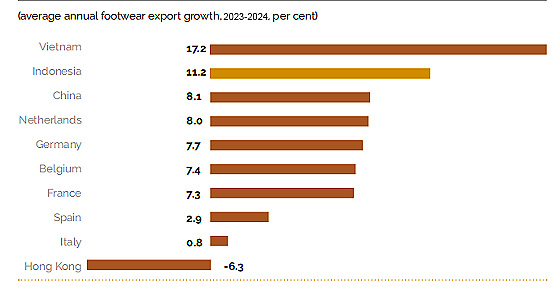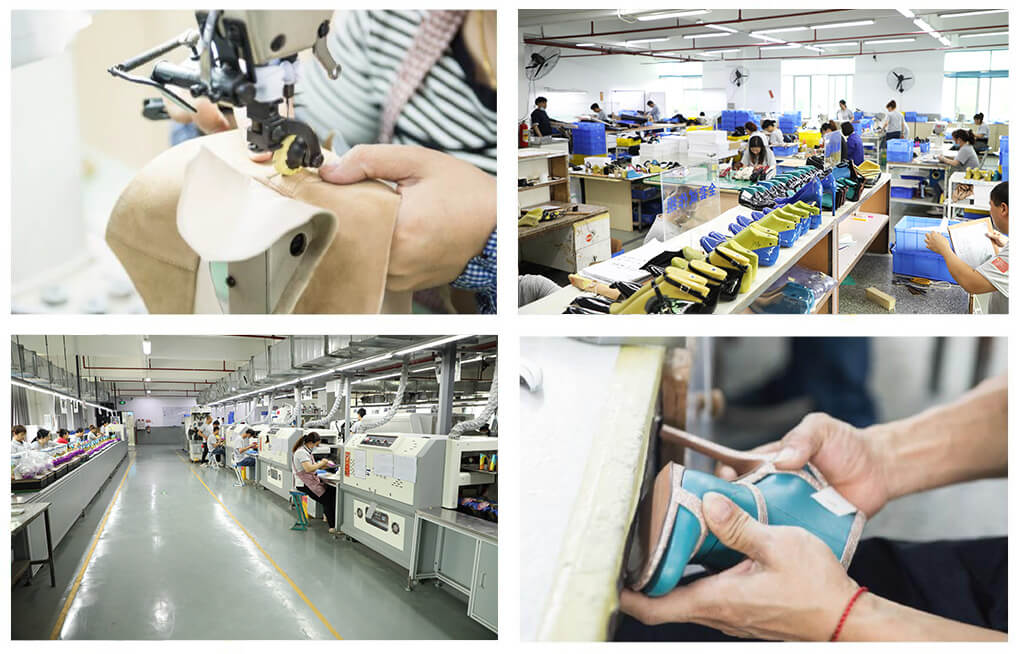In the previous article, we discussed the advantages and disadvantages of Chinese and Indonesian footwear manufacturers, highlighting a key point: as time passes and China’s economy rapidly develops, its shoe manufacturing industry chain will gradually shift outward to Southeast Asia. Vietnam and Indonesia are the two largest footwear exporters and countries with the largest number of footwear manufacturers in the region, and in recent years, the growth rates of shoe exports in both countries have ranked among the highest.
On one hand, they benefit from the transfer of China’s shoe industry chain and from the advantages of foreign investment in establishing factories. On the other hand, they are in competition with each other. Considering the current state of shoe production in both countries, I believe the core of this competition revolves around costs, namely labor and production costs. Hence, this article will explore the current status and future of cost competitiveness in Vietnamese and Indonesian footwear manufacturers from a cost perspective.
Driven by low labor costs, a highly skilled workforce, and favorable trade agreements, the shoe market in Vietnam and Indonesia is experiencing rapid growth. By the end of 2024, Vietnam is expected to have around 3,000 footwear manufacturers, with exports increasing by 17.2% year-on-year, primarily concentrated in Ho Chi Minh City. It is anticipated that by 2025, the per capita footwear purchase in Vietnam will reach 1.43 pairs.
By the end of 2024, Indonesia will have approximately 1,500 footwear manufacturers, half the number of Vietnam, with exports increasing by 11.2% year-on-year, mainly concentrated in Java and Sumatra, particularly in West Java, East Java, and North Sumatra. In Bogor City, West Java Province, there exists a cluster of footwear industries where production is distributed across 14 villages, each focusing on a specific type of footwear, such as sandals, children’s shoes, or sports shoes. Besides West Java, both formal and casual footwear production predominantly occurs in Yogyakarta, North Sumatra, and East Java.
The footwear market in both countries is primarily divided into three categories: local brands, well-known international brands, and non-branded shoes. There is intense competition between local and international brands, with both sides emphasizing quality improvement, customer satisfaction, and keeping up with market trends to reach a broader consumer base. International brands like Nike, Adidas, Acis, ALDO, and Converse captivate consumers seeking high-end, unique designs and superior quality, often at medium-to-high price points.
In contrast, local brands primarily attract local consumers with lower prices and comfort, focusing mainly on categories like sports shoes, slippers, leather shoes, children’s shoes, and sandals.
In recent years, Indonesia’s high labor costs have been identified as a significant factor affecting its footwear export competitiveness. Wages for Indonesian footwear workers are relatively high; according to the board of directors of the Indonesian Footwear Association (Aprisindo), the average minimum wage for footwear workers in West Java—the area with the highest concentration of footwear production in Indonesia—has reached $179/month, compared to Vietnam’s $95/month, which is nearly double the cost of labor in Vietnam.
1. Although footwear labor wages in Vietnam remain relatively low compared to Indonesia, the country cannot depend solely on inexpensive labor. Vietnam’s low labor costs have resulted in decreased production expenses; however, the value added is minimal. For instance, in the case of low-priced footwear, the expenses for R&D, design, and marketing are insufficient. In fact, the added value is significantly low. This is primarily due to the fact that unskilled workers constitute 50% of the total labor force. Consequently, enterprises face deficiencies in management skills, organizational efficiency, and the provision of other resources. The footwear industry in Vietnam must identify alternative advantages in production since technological advancements will influence the demand for skilled labor. Therefore, investment in information technology should be a priority for Vietnam.
2. In contrast, the current scenario in Indonesia is quite different from that in Vietnam. Indonesia possesses clear production advantages in certain specialized and high-value-added footwear, including security shoes, vulcanized shoes, and insulated rubber shoes. Should Indonesian footwear manufacturers fail to create additional value, the higher wages offered to workers may ultimately render them uncompetitive in the global market. Thus, it is essential to discover methods for engaging in these high-value-added activities to ensure their long-term success.
As a low-cost country, Vietnam competes by employing aggressive pricing strategies, benefiting from its unusually low production costs. For footwear manufacturers, reduced costs equate to increased profitability. Consequently, Vietnam has emerged as the third largest market for global footwear exports. Over the past five years, Vietnam’s footwear exports have expanded at an average rate of 9.45% per year. Meanwhile, while Indonesia may not excel like Vietnam in attracting foreign investment to establish factories, its footwear exports have also risen year after year, growing at 7.62% over the last five years.




Leave a Reply
You must be logged in to post a comment.